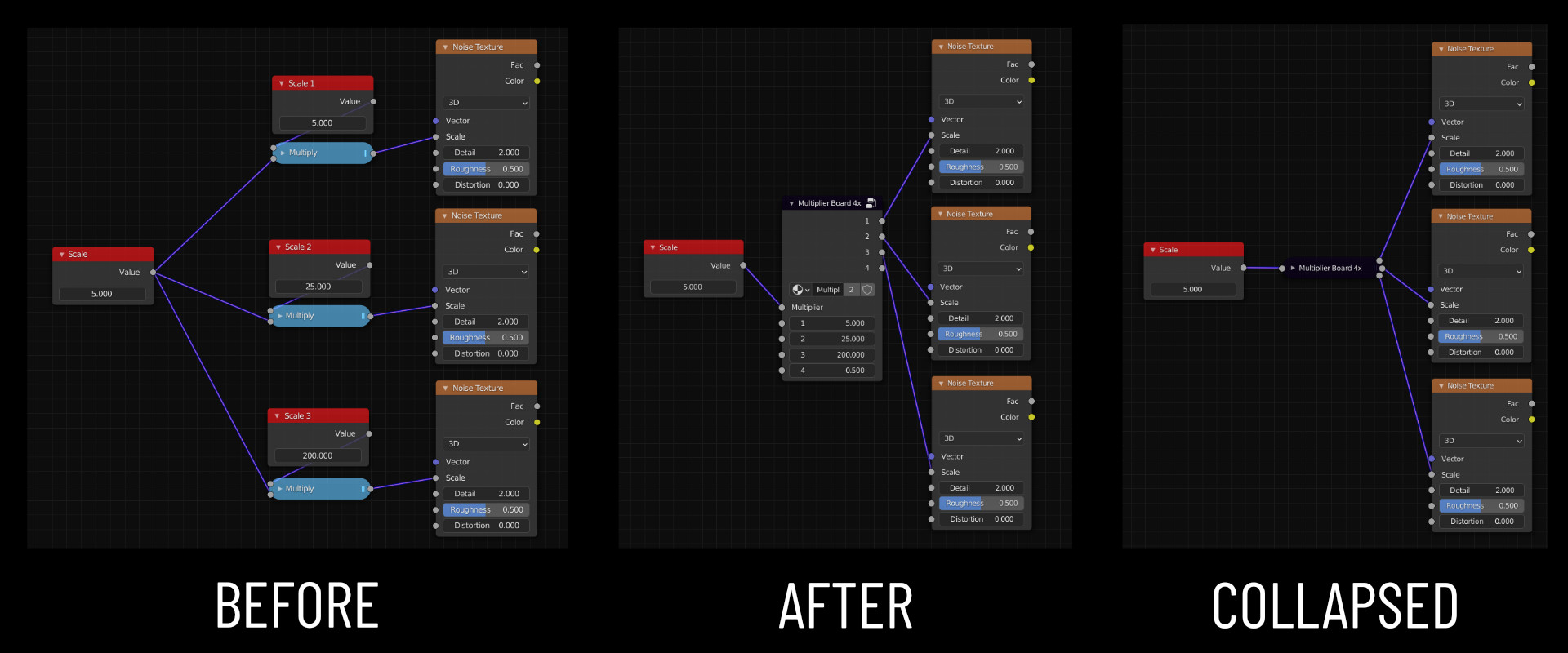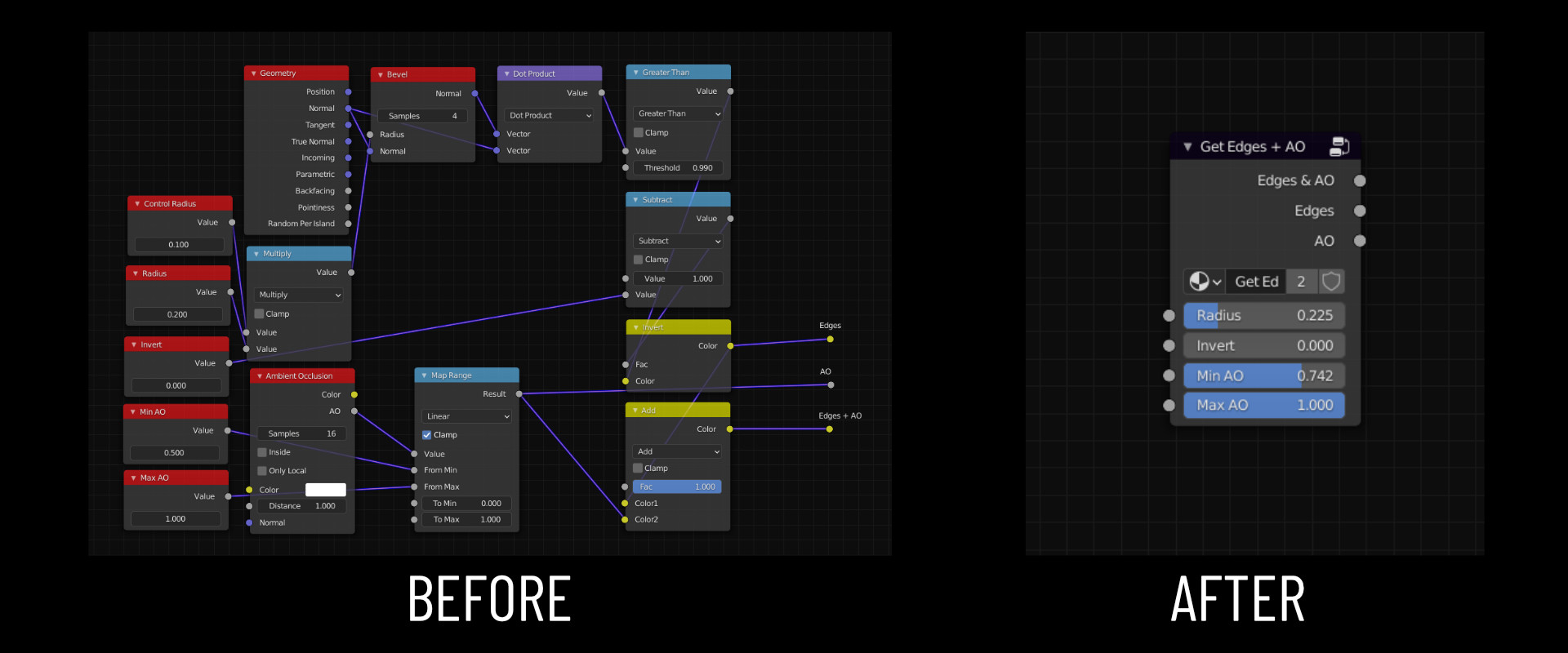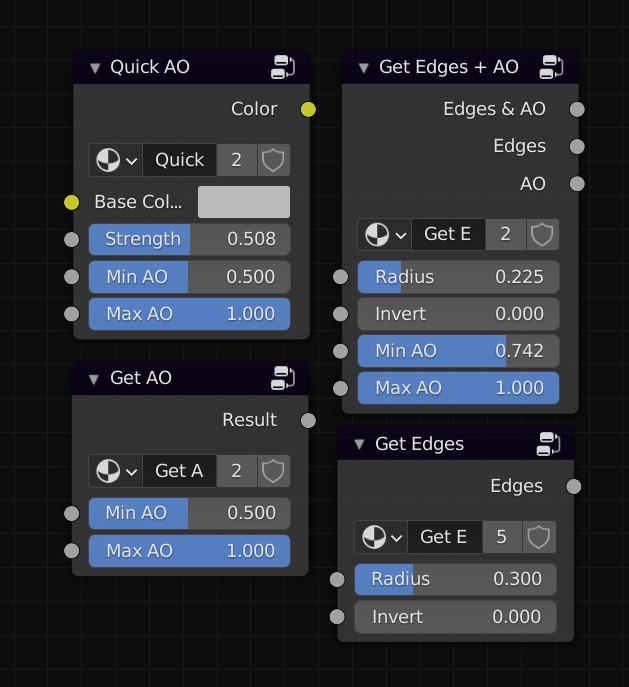Node Group Tools
I've created a collection of node groups that serve a variety of functions in helping me build materials at a faster pace.
Using node groups in your own files:
Either copy and paste the sphere object from the NodeTools.blend file into your own scene (this will transfer the object and material containing all of the nodes), or go to File -> Append, choose the NodeTools.blend file, go to the NodeTree folder and append your nodes of choice. Alternatively, add the downloadable blend file to an asset library of your choice (Edit - Preferences - File Paths). All of the node groups have been marked as assets, meaning you can drag and drop them into your file from the asset browser.
Multiplier Board 4x & 10x
In situations where you have many generated textures, each with unique scale values, and want to modify their scales with a single control value whilst also preserving the ratios between them (that's a mouthful).
Typically you would have to add a math node to multiply the desired scale by the control scale and then feed the output to the individual values. but with the Multiply Board nodes, this is simplified. Plug in a multiplier value (the user-defined scale) and set the relevant numerical inputs appropriately. See an example here (may need to zoom in):
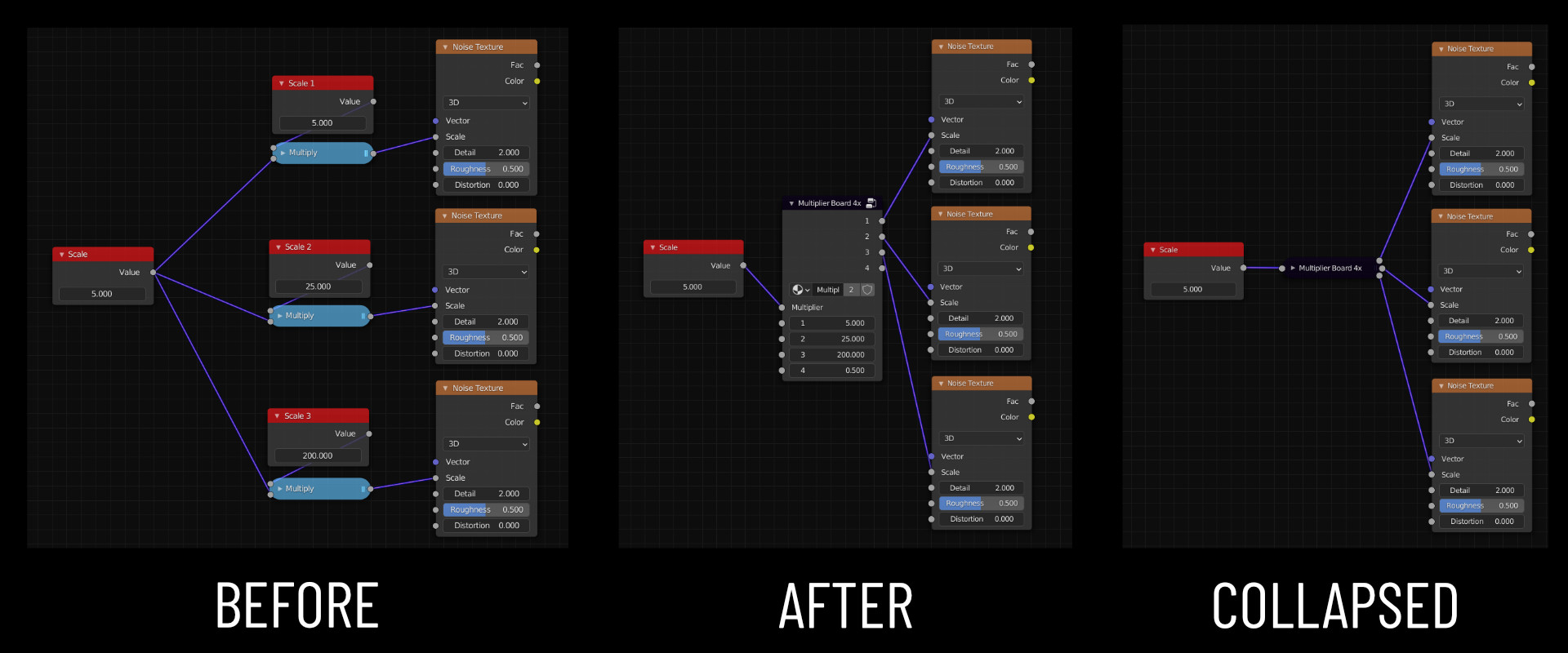
Notice how if you press CTRL+H with the multiply board selected and collapse it, it will hide unused values and take up minimal space, so we can multiply each of the values without taking up much space.
Quick AO, Get AO, Get Edges, Get Edges + AO
This one is quite self-explanatory. Placing an ambient occlusion node and a color ramp to get a mask is annoying, so I just crammed it into one node (Get AO). The same goes for edges - using a bevel node and getting a mask from a dot product: ew, who needs that? Just use the Get Edges node. Want both AO and Edge data? Use the Get Edges + AO node.
But what about Quick AO? Use this one if you want to quickly darken a surface with ambient occlusion - it lets you pass a base color input and receive the darkened version as an output.
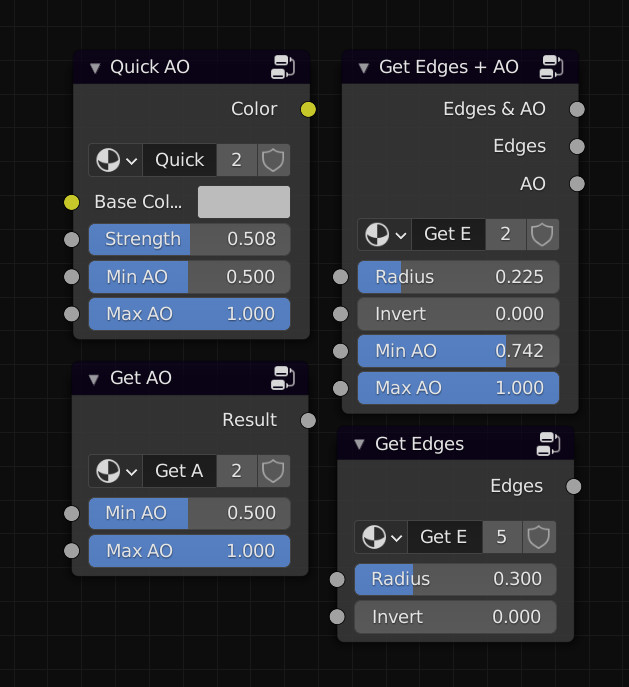
AO Range Board and Edge Range Board
I'm using ambient occlusion and edge masks a lot in my recent materials to get procedural wear effects based on the geometry of the object. Occasionally I want to take slightly different thresholds from the same set of AO or edge data, so I've made nodes to let me get multiple outputs at once. These seem like they will be more specific to my workflow. Again, like the multiplier boards, once you have your values, you're supposed to press CTRL+H to hide the rest.

Noise H and Noise S
If you take a generated noise texture and pass the color output through a Separate HSV node, you can get some extremely useful patterns, especially from the H and S values. I find this process so regularly used that I think they deserve their own nodes.

Mix Board
This might be the most specific-use node of the group. Typically when you're adding generated texture masks together, you're using repeated MixRGB nodes to combine the result. I thought it would be nice to save some space by combining two into one and making both results accessible. Note to self: Make a variation for adding and subtracting.

And more...
There are more node groups included and I will try to add more over time as I optimize my workflow.


